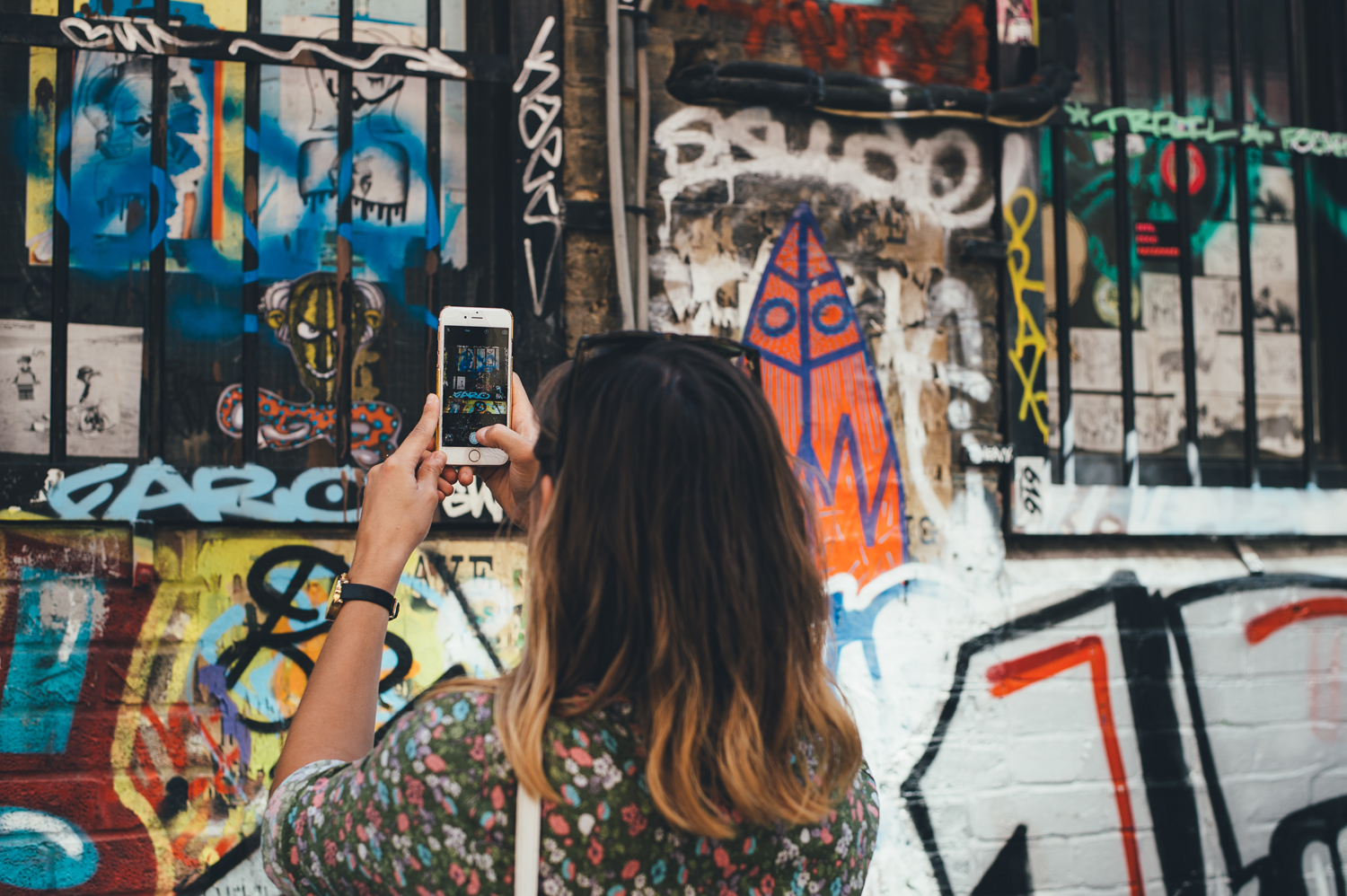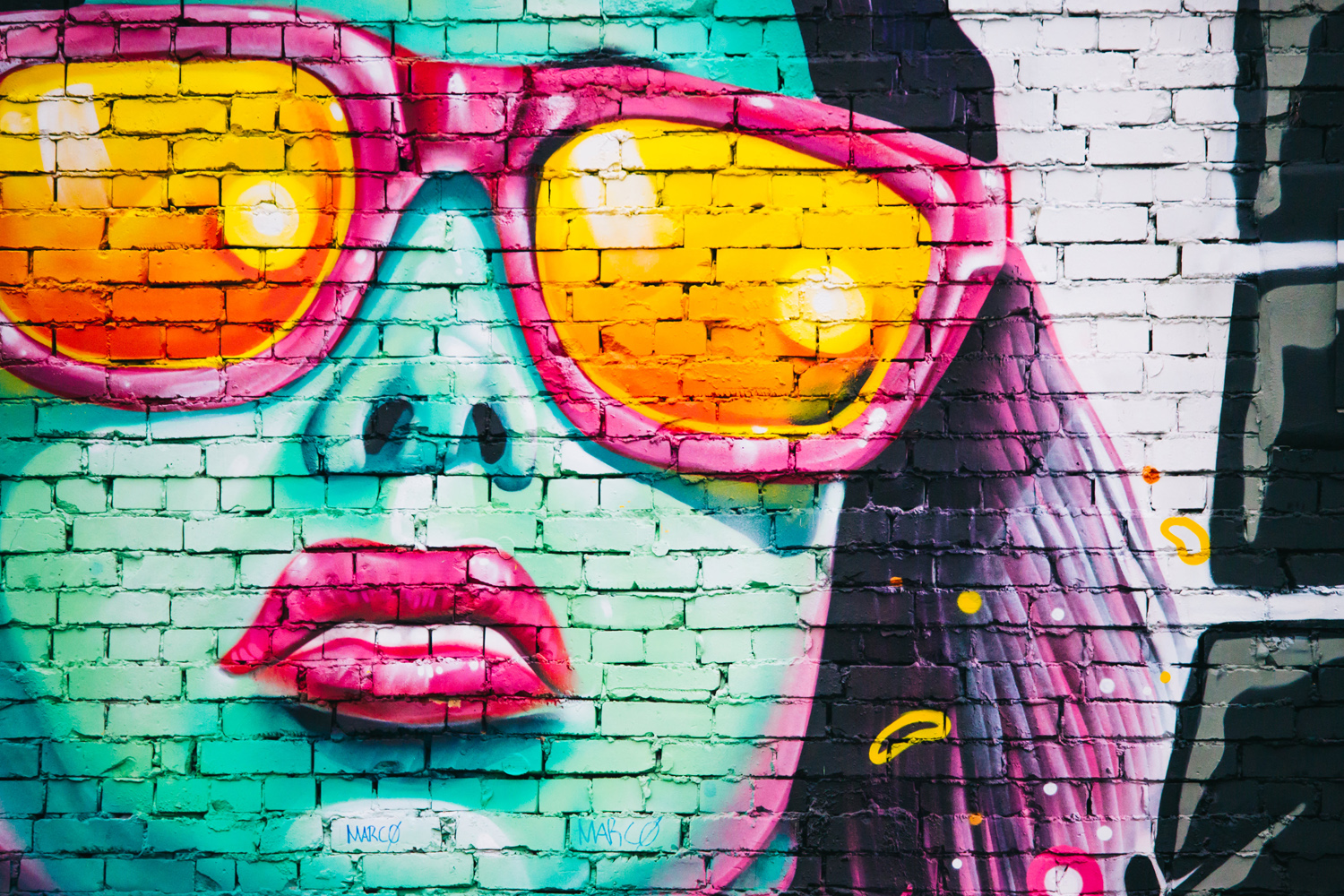Why do you travel?
Is it to see new things? To experience a new culture?
It’s no secret that culture isn’t always housed in a museum.
Culture is mixed into food, it flows through languages, it’s painted on walls, and it walks on the streets. And to earnestly experience a city and find the true undertones of its heritage, I’ve found that you have to look to those streets.
On the rough-hewn cobbles and meticulously-laid bricks of cities, you can see history written in stone.
For those who love to travel (likely everyone reading this), you have probably perfected traditional tourism. You know how to hop on a bus and hit all the major sites. You know how to frame a photograph for the perfect portrait of a famed monument. You know what you are supposed to do.
But what makes travel interesting is its refusal to adhere to even the best laid plans. Its unexpected imperfections.
[Tweet “”What makes travel interesting is its refusal to adhere to even the best laid plans.””]
It forces you to react and adjust in order to understand your surroundings. And that is why we love it so much. And because travel inherently refuses to be perfect, why should we search for perfection in a city?
Hint: We shouldn’t.
Next time you’re somewhere new, try viewing your surroundings through a different lens; one that focuses on the “imperfections” of society: Street art.

As both an encouraged form of self-expression and a way to document and comment on the cultural shifts of a nation, there are many reasons to seek out street art on your travels. From depictions of social crusades to masterpieces on makeshift canvases, taking note of street art on your travels is like seeing a city without an Instagram filter. It’s honest.
Why Street Art?
Street art is nothing new. It has been around since ancient Romans decided to tag walls in order to show where you could find the nearest brothel.
For centuries, street art has continued to satisfy that human desire to leave a mark on the world. It has enabled the public to voice its perspective on politics, and it has been a means of bringing beauty onto an otherwise unremarkable edifice.
[Tweet “”Because travel inherently refuses to be perfect, why should we search for perfection in a city?””]
In general, the faces behind the art always remain anonymous. Not anymore.
More and more, as artists come out of anonymity, street art is becoming the recognized domain of women. From social justice documentation to guerrilla knitting projects, the women who create the public art enlivening cities around the world are part of more than just a movement. They are altering the way that travelers and locals alike see their cities.

Are you ready to see the #unfiltered version of the next city on your travel bucket list? Then make sure you pay attention to the signs. The bare face of the city may be on the wall next to you.
If you’re going to any of the cities listed below, make sure to keep your eyes open for the work of these influential women artists.
Barcelona, Spain
Born in Toulouse, France and based in Barcelona, Miss Van is an internationally-recognized street artist. Since 1993, she has been gracing walls with her unique images of Baroque-era women in masks. These iconic women with hidden features have become so well known that they are fondly referred to as poupées.
What is particularly remarkable about Miss Van’s work is that, as the male-dominated graffiti subculture has evolved into a more neutral and accepted artistic ground, so too have the women she depicts gone from mere sex objects to confidently sexual females whose portraits are often a nuanced interplay of gender.
Today you can see these sultry characters on the streets of Barcelona, where they reflect the powerful feminine synergy of rawness, softness, and emotion that cannot be hidden, even by a mask.
Berlin, Germany
Berlin may be considered the capital of street art and the Berlin Wall may be the prime example of how street art is used as a voice for the silent masses.
Despite the fact that in today’s Berlin, there is no longer one dedicated outdoor canvas on which artists and citizens express their rage, opinions, and perceptions of society, the city’s street art scene is just as vibrant. You just need to know where to look.
A good place to start is to look for the work of MadC.
In an era when street art is being removed from the streets for display in the most prestigious of galleries, artists are being forced to deconstruct the meaning behind their work. No longer does contemporary art “belong” to the street, and MadC is at the forefront of this new artistic dialogue with her work.
Her art is like a machine in both its size and style. In fact, in 2010 she completed a 639 square-meter (~2,100 square-foot) mural titled Stylemachine. Through this piece, MadC evoked the stories of graffiti artists who put all their energy into creating subversive art only to become the status quo, and then have to reinvent their style all over again.
The aesthetic of MadC’s work explores the roots of this subculture and, according to her site, tries to highlight the “importance of a never-ending (re)interpretation of the two concepts. A ‘traditional’ subject matter is re-contextualized into a completely new visual language.”
Cairo, Egypt
https://www.instagram.com/p/BF2G1HOKo_S/
Since 2011, the women’s movement has taken of a new form in Egypt.
Today, it is a strong, vocal force that is echoed through the many faces that brazenly gaze down from city walls. Each face speaks uncensored about the injustice, the sadness, and the inequalities that have been experienced, but one voice expresses her dissent louder than the rest of the crowd.
That voice is Mirah Shihadeh.
As a street artist, unsurprisingly, Shihadeh is intimately familiar with the streets of Cairo, and it is this intimacy with the harsh realities for women this era of instability and revolution that is the backdrop for her work. With murals like Circle of Hell, she clearly comments on the profusion of sexual harassment crimes on streets of Cairo.
In particular, some of Shihadeh’s more well-known pieces illustrate strong women who use the power of their voices (or their spray cans, in some cases) to raise awareness of prolific sexual harassment, and deter men from interfering with their right to their own opinions and bodies.
Unfortunately, due to the whitewashing campaigns by the Ministry of the Interior, many works of street art in Cairo are gone as soon as they come up. So, if you’re passing through and happen to see a piece, make sure to take a photo and post it online. Add your voice to the movement in order to help preserve and magnify the voices of others.
Kabul, Afghanistan
As a pioneer in Kabul’s contemporary art scene, Shamsia Hassani is using her art to make a difference. Hassani’s work brings color, life, and self-expression to the city’s walls.
With her art, Hassani hopes to influence the way that her society views women who refuse to be silent. She explains:
“I have changed my images to show the strength of women, the joy of women. In my artwork, there is lots of movement. I want to show that women have returned to Afghan society with a new, stronger shape. It’s not the woman who stays at home. It’s a new woman. A woman who is full of energy, who wants to start again. You can see that in my artwork, I want to change the shape of women. I am painting them larger than life. I want to say that people look at them differently now.”
In Kabul, graffiti is a new approach through which to do this.
Despite the deterrents that exist on the streets, Hassani perseveres. One of her more recent works is entitled Dream of Graffiti, and is a series where digital photographs are altered through the application of paint and/or Photoshop color techniques in an effort to explore issues of national and personal security.
The challenge of Hassani’s body of work is that while she paints these wonderful images to act against gender violence in Kabul, she exposes herself, unprotected, to that which she combats with her art. This vulnerability is to her, however, what makes her chosen method of expression so vital.
London, England
Saki & Bitches is a Japanese-born artist based in London, and you’ll know her work when you see it.
Despite London’s cold and clammy weather, the women that Saki paints are scantily-clad while proudly going about their business, and are always looking the viewer in the eye.
As art, Saki & Bitches’s work is challenging. It requires you to define the grey area between appreciation and voyeurism. Don’t worry, though. In this case, your voyeurism is appreciated.
Saki’s work is largely inspired by the canvas that the street presents her with. Whether that be bars that are reminiscent of cages or smooth stone that reminds you of silky sheets, Saki’s art changes with the landscape. That’s what makes her work perfect for a place like London. It is both a product of and a reaction to the city in which it was created.
New York, New York
In the City that Never Sleeps, it’s not shocking to find walls tagged and art being sold on every street corner. But with so much art, how do you know where to look?
By knowing what to look for.
New York is home to 32-year-old street artist Jilly Ballistic. A creative, a feminist, and a law-breaker, as an artist she embodies the disruptive forces that shape and bend our society. Her specialty? Advertising.
Ballistic alters, patches, and combines media into existing street ads (mostly in subways) to make a statement about our everyday lives — usually a feminist one. According to an interview she recently did for Elle magazine, one of her favorite pieces is “Poon Hawk,” which is a five-foot high vagina painted over a Game of Thrones poster of a winged bird that reads “All Men Must Die.”
Street tagging in New York is a dangerous game, but it is also one that is being played by more and more women. Ballistic’s art is a perfect example of a community who is shrugging off the chains of sexism and competing on equal footing in the eyes of the law. Who wouldn’t want to see that story being told through art?
Paris, France
maintenant c'est 1 artiste du #streetart à suivre ! #Kashink <3 pic.twitter.com/HHskJpTP3L
— Fadhlaoui (@Fadhlaoui2) July 27, 2016
What’s in a name? Parisian street artist Kashink can tell you what’s in hers.
“My name ‘Kashink’ is an onomatopoeic word; it comes from comic books I read when I was a kid. It’s a sound of action,” she says. This sound of action sounds suspiciously like the two words cash and ink mashed together, just like you would imagine they might be on an artist’s canvas in a gallery.
Kashink, however, is an artist of the streets, and Paris’s walls are dotted with her signature.
Just look for colorful, four-eyed faces and you know that you have found Kashink’s work. Her bold portraits ask people to consider the emotions that a face can hold. She searches to find what is behind a facial façade, whether the city’s or the community’s.
If you’re in Paris, keep your eyes open for her portrait, See No Evil. In this piece, Kashink looks behind the performances that we all stage when we are in public. See No Evil specifically seeks to prod into that idea.
“My piece at See No Evil is a man holding a key,” she says, and explains that this is, “so you know there’s something going on.”


